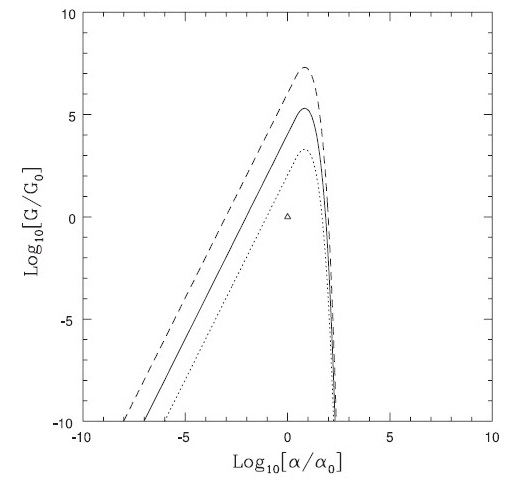This topic came up at Panda’s Thumb today. A recent paper describes how the undisturbed mud from the bottom of a unique lake in Japan can allow us to calibrate carbon-dating much further back in time that we’ve ever gone.
Carbon-14 is radioactive and is used for carbon dating the remains of living things. One problem with carbon dating is that the amount of carbon-14 has varied over time. Since it varies slightly, we get dates that are slightly off. We might get a carbon-14 date of 12,300 +- 500 years. That plus or minus is caused (in part) by that unknown variance in the carbon-14 at the time the organism lived.
This new data give us a much more accurate picture of the amount of carbon-14 produced in very specific time frames in the past. This lets us reduce that variance range by using better information.
So, there’s this side discussion about how this allows for much more accurate dating for over 10 times the Young Earth Creationist’s age of the universe. Then our usual YEC creationist troll pops in and starts blabbering about ‘Changing constants” and “where you there” and all that fun stuff.
Then Tom, quite cogently, mentioned that you can’t have the fine-tuning argument AND the changing constants notions at the same time.
So, the fine-tuned universe argument goes something like this:
The fundamental constants of the universe are so important that if any of them varied by more than a few percent, then the universe would be incapable of supporting stars, galaxies, life, etc. Therefore, the universe was designed to support life. Now anyone who understands how to draw a valid conclusion will see all sorts of problems with that logic. But it gets worse.
Now, a traditional Young Earth Creationist (YEC; as compared to a OEC, Old Earth Creationist), explains away all the radiometric dates that are older than 6000 or so years… and the light coming from galaxies billions of light years away … and all that stuff as either “God made it that way” or “the fundamental constants have changed to speed up light and make atoms decay faster”.
All forms of creationist (and especially the Intelligent Design types) really like the fine-tuning ‘argument’.
As you can see, at this point we’ve gotten a bit of a conundrum. If the universe is fine-tuned for life, then the physical constants can’t have changed (think about speeding up the fission decay of uranium by about 50,000 times… we call that an atom bomb). But if they can’t have changed, then the universe is old. Now, we’re just getting silly with all the made up fixes. Easier to just say “It’s a miracle” and walk away.
Wow… 444 word digression. Sorry about that.
The paper I actually want to talk about pretty much destroys a big chunk of the fine-tuning argument. Dr. Fred Adams wrote a paper called Stars in other universes: stellar structure with different fundamental constants. In this paper, he looks at what is needed to make a star, figures out what the fundamental properties of universe that allow this to happen, and then look at the solution space that would allow for long-lived, fusion type stars to form.
In other words, what settings of some fundamental constants would allow for stars that are bright enough and long-lived enough for life to evolve. Now this isn’t the end-all of the concept. He only looked at three fundamental constants. The gravitational constant G; the fine-structure constant ?, which fixes the strength of the electromagnetic force; and a parameter C that determines the rates of the nuclear reactions responsible for the fusion process that makes stars shine.
Then he did lots of maths… scarey looking maths with lots of squiggly lines and equal signs with too many lines and stuff like that.
What he found was quite extraordinary and crushing to the fine-tuned universe notion.

On the bottom is the fine structure constant. The y-axis is gravitation. The solid line is the value for C in our universe. The dotted line is 1/100 the value of C and the dashed line is 100 times the value of C. The area under the C curve is all of the values of G and ? that allow long-lived fusion type stars to form. The little triangle in the middle, that’s our universe.
This graph shows that the values for those three constants can vary by 2 orders of magnitude in any direction, in any combination and there will still be stars. It’s not 2 or 3%… it’s 100 times. And G can be decreased by 5-10 orders of magnitude and still have stars develop.
Further, Dr. Adams explored the possibility of other “star-like” systems for generating sufficient energy for life. What he looked for was a system that could produce about the same amount of energy as the Sun and have about the same life-span. There were several viable candidates, provided that one altered those three constants.
For example, for any value of G, and a fairly low ? (depending on C), black holes can form that are sufficiently long-lived and provide the requisite amount of energy. It could actually happen in our universe.
So, any time you hear someone say “The universe is fine-tuned for life”, you can say that fine-tuning doesn’t mean much. For these three fundamental constants can vary way more than anyone ever thought and still generate stars long-lived enough for life to evolve.
